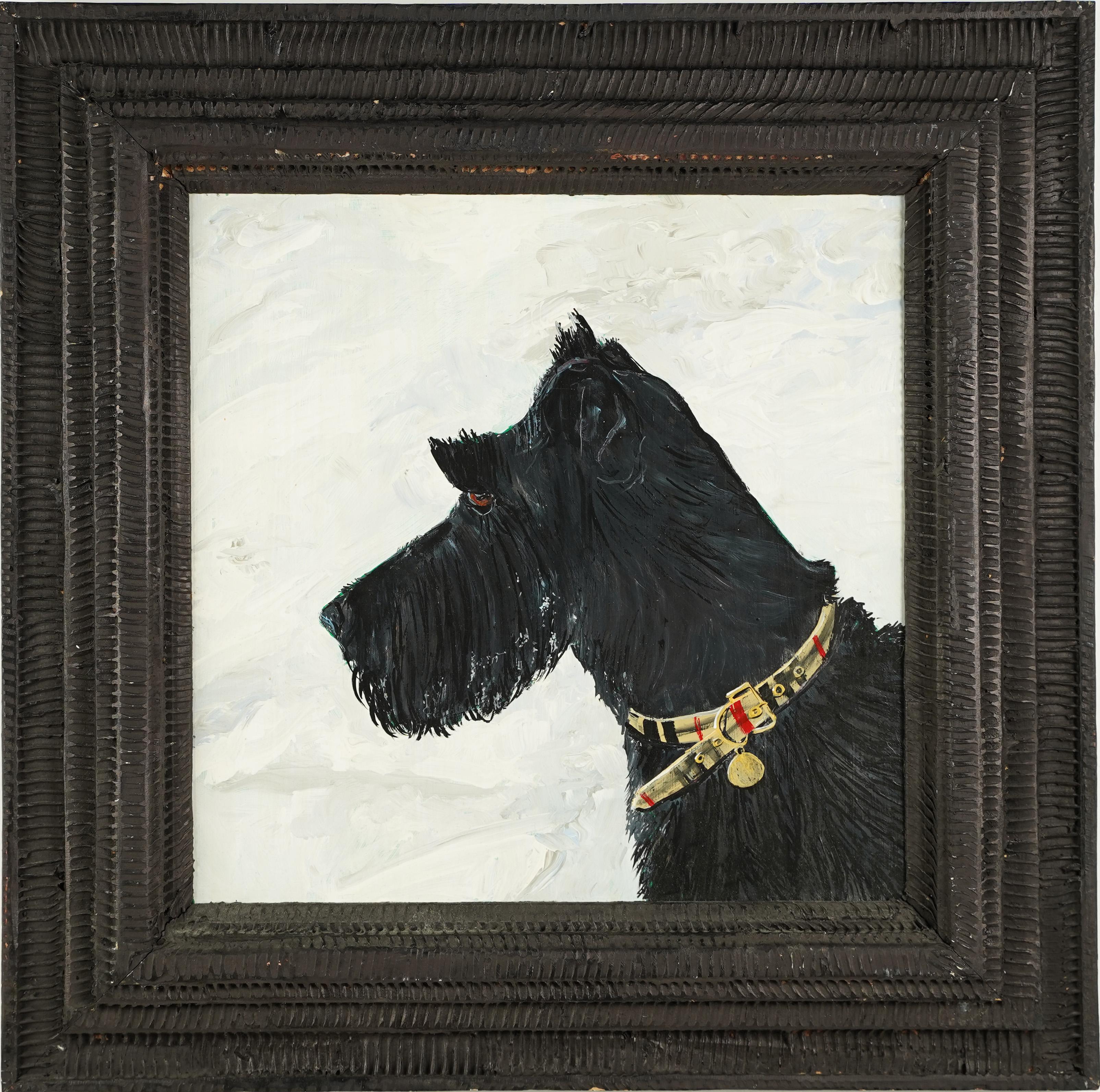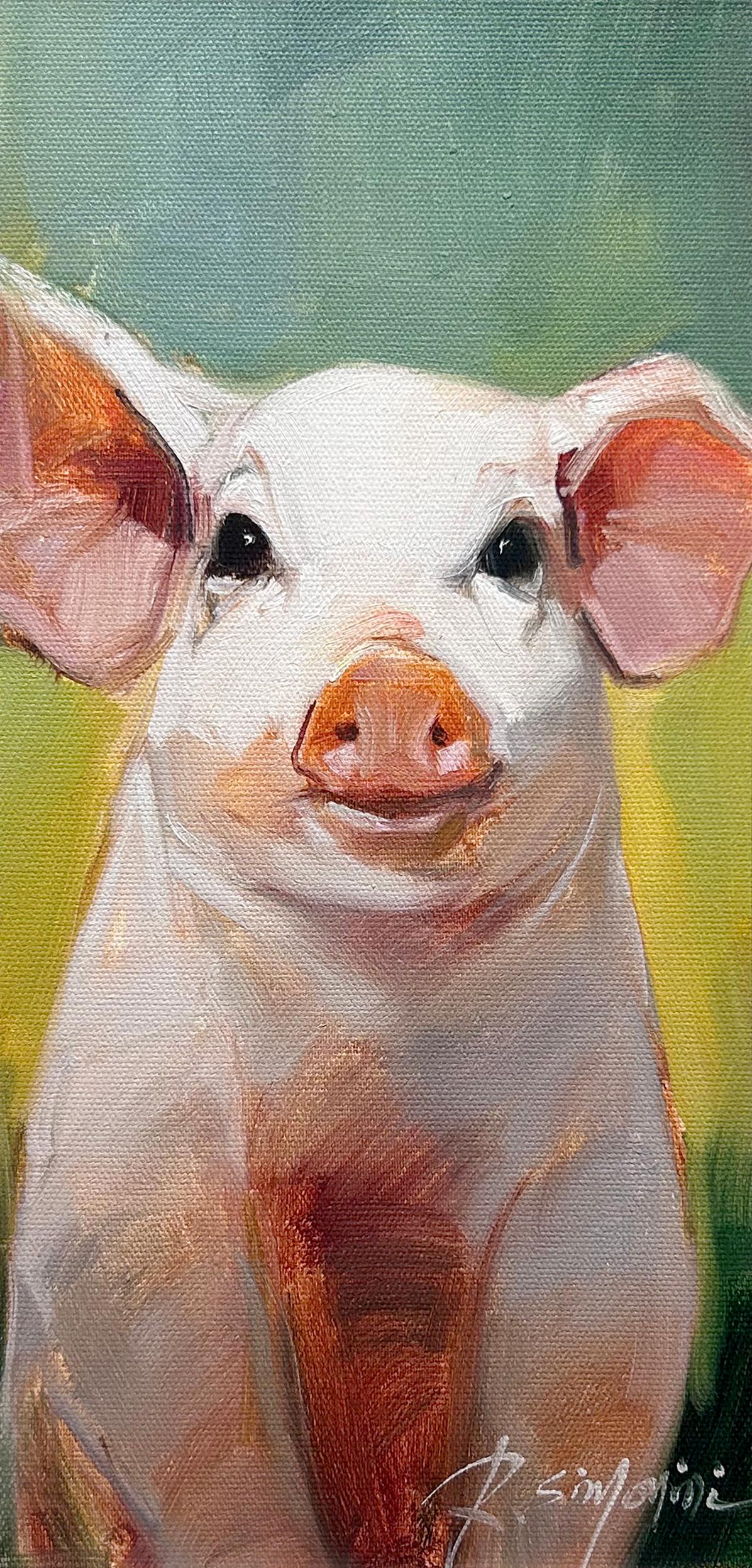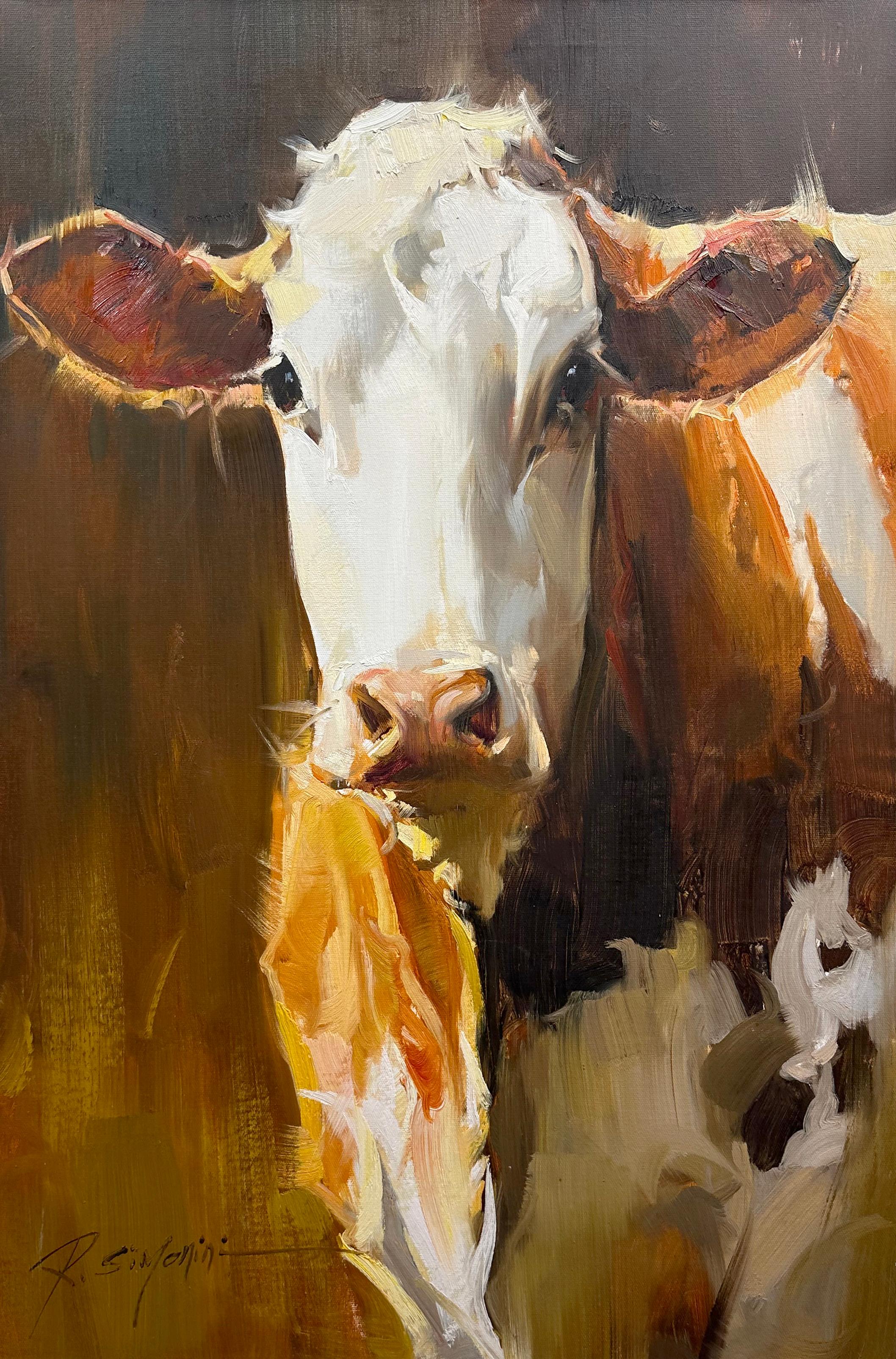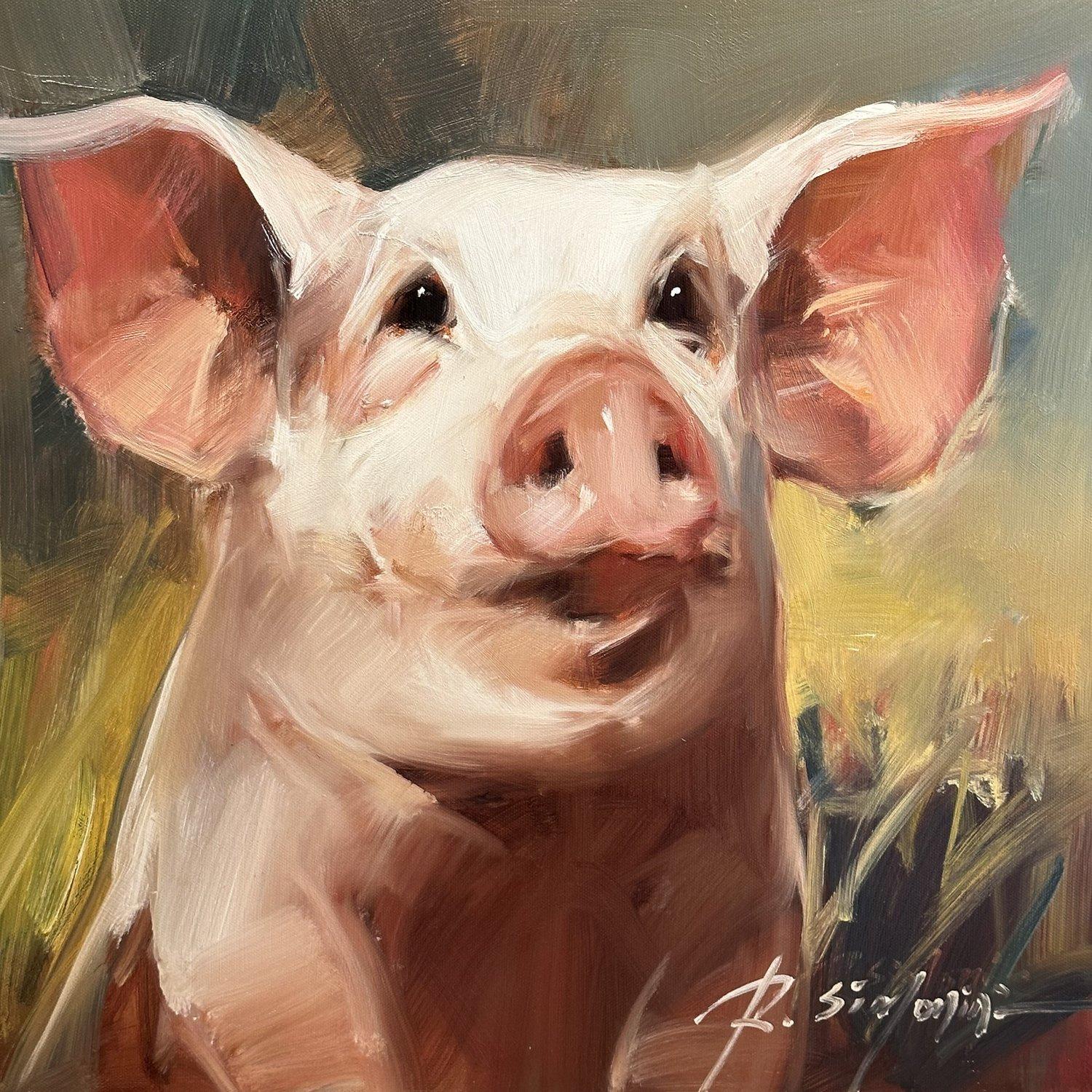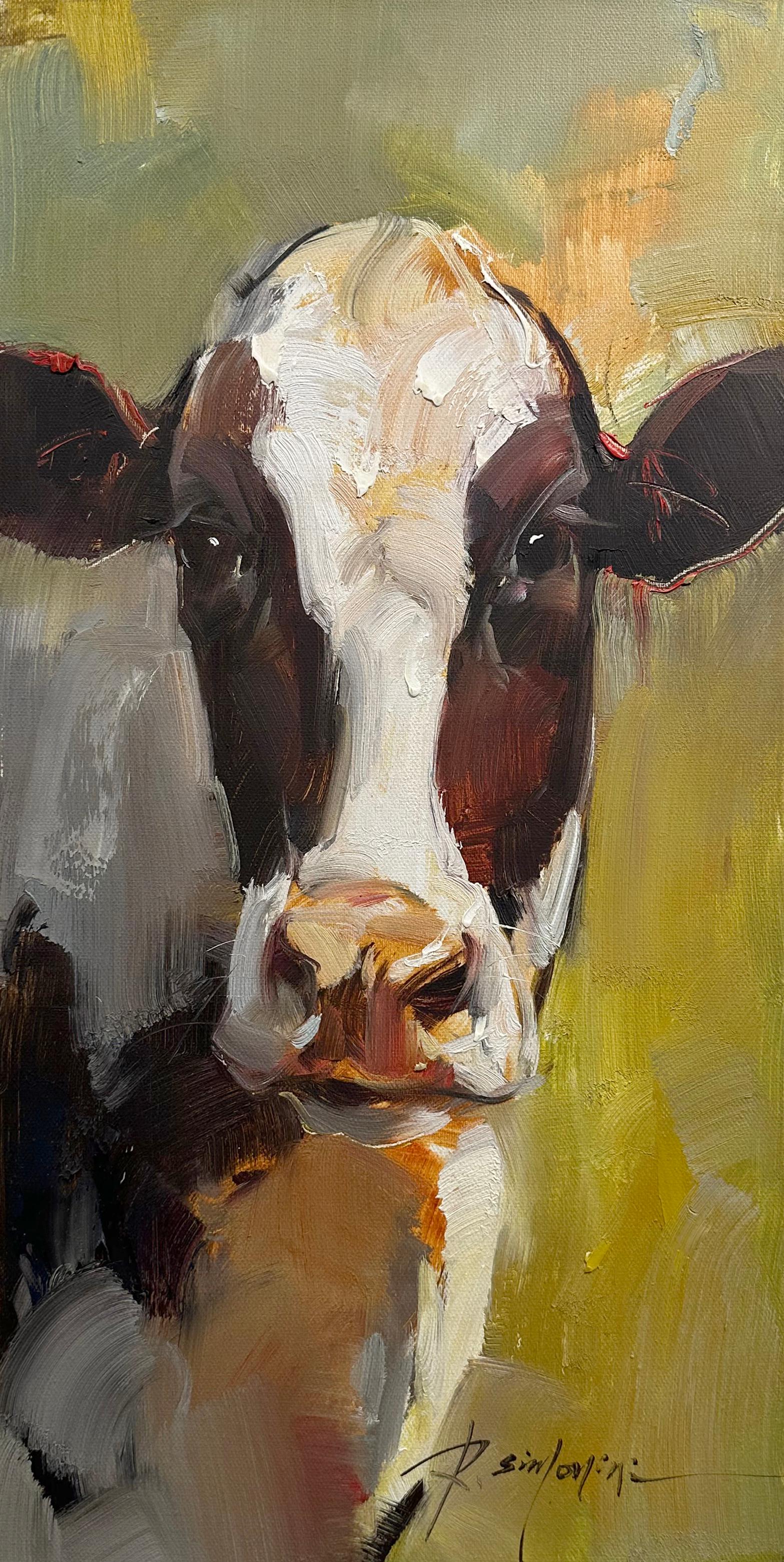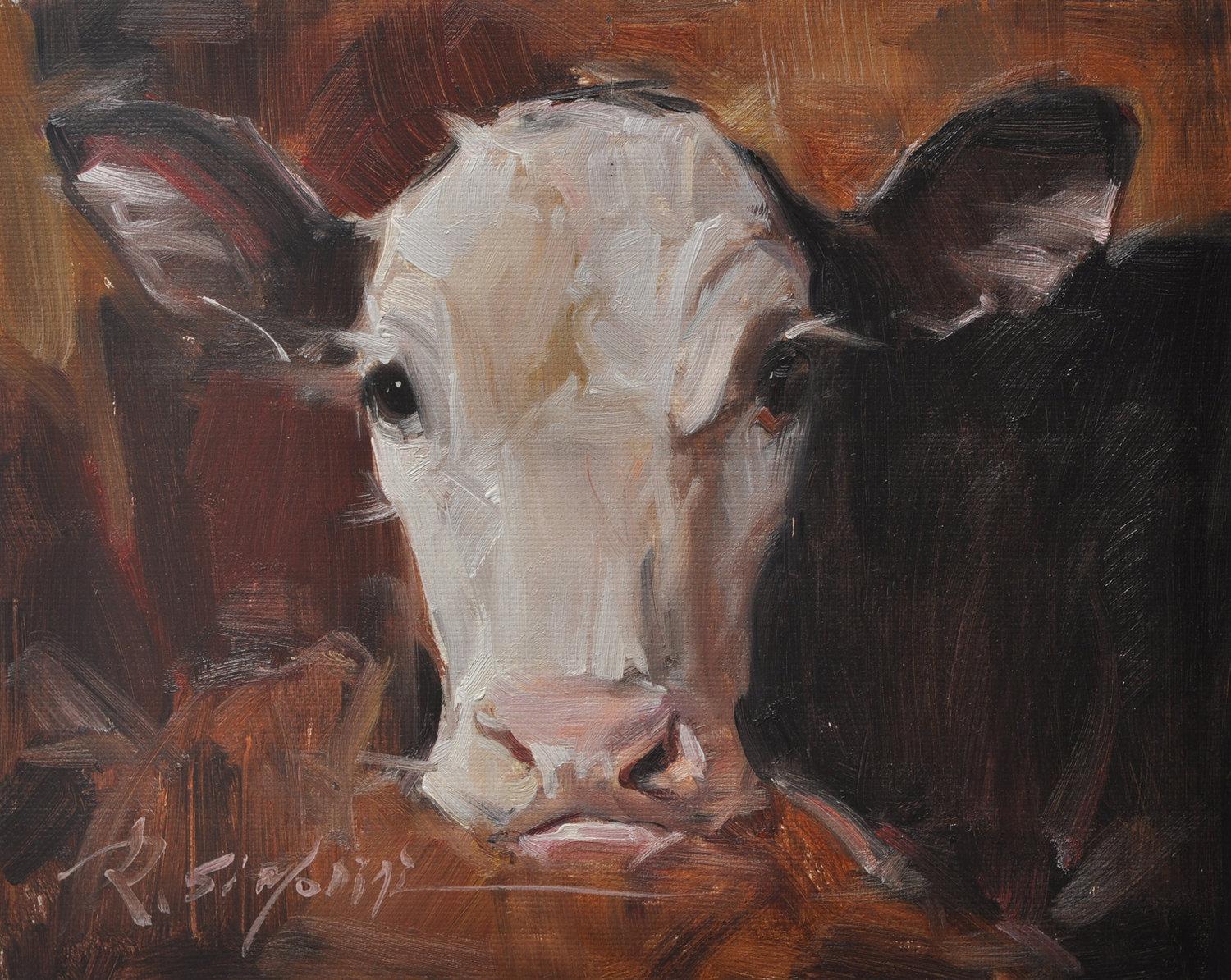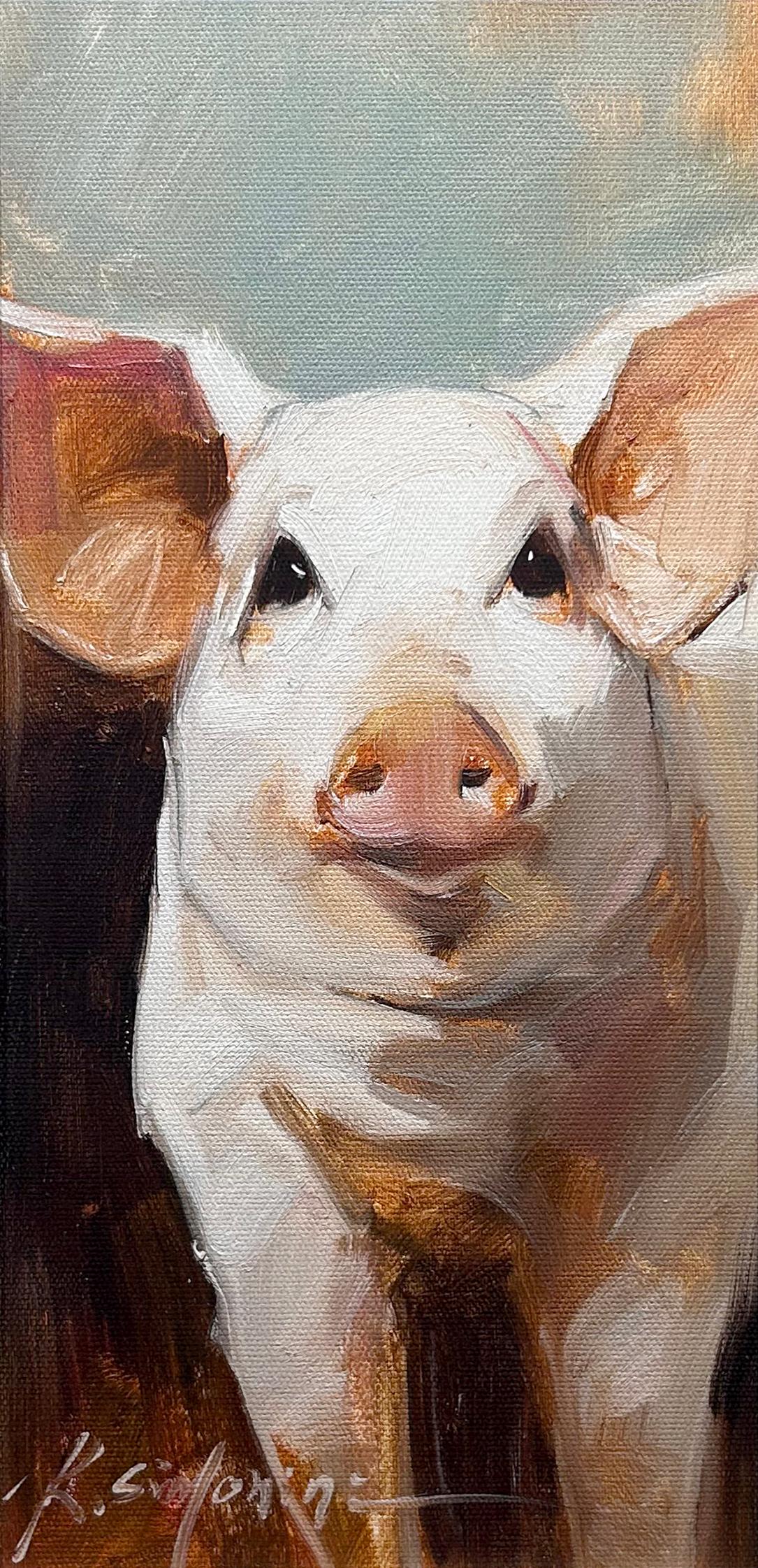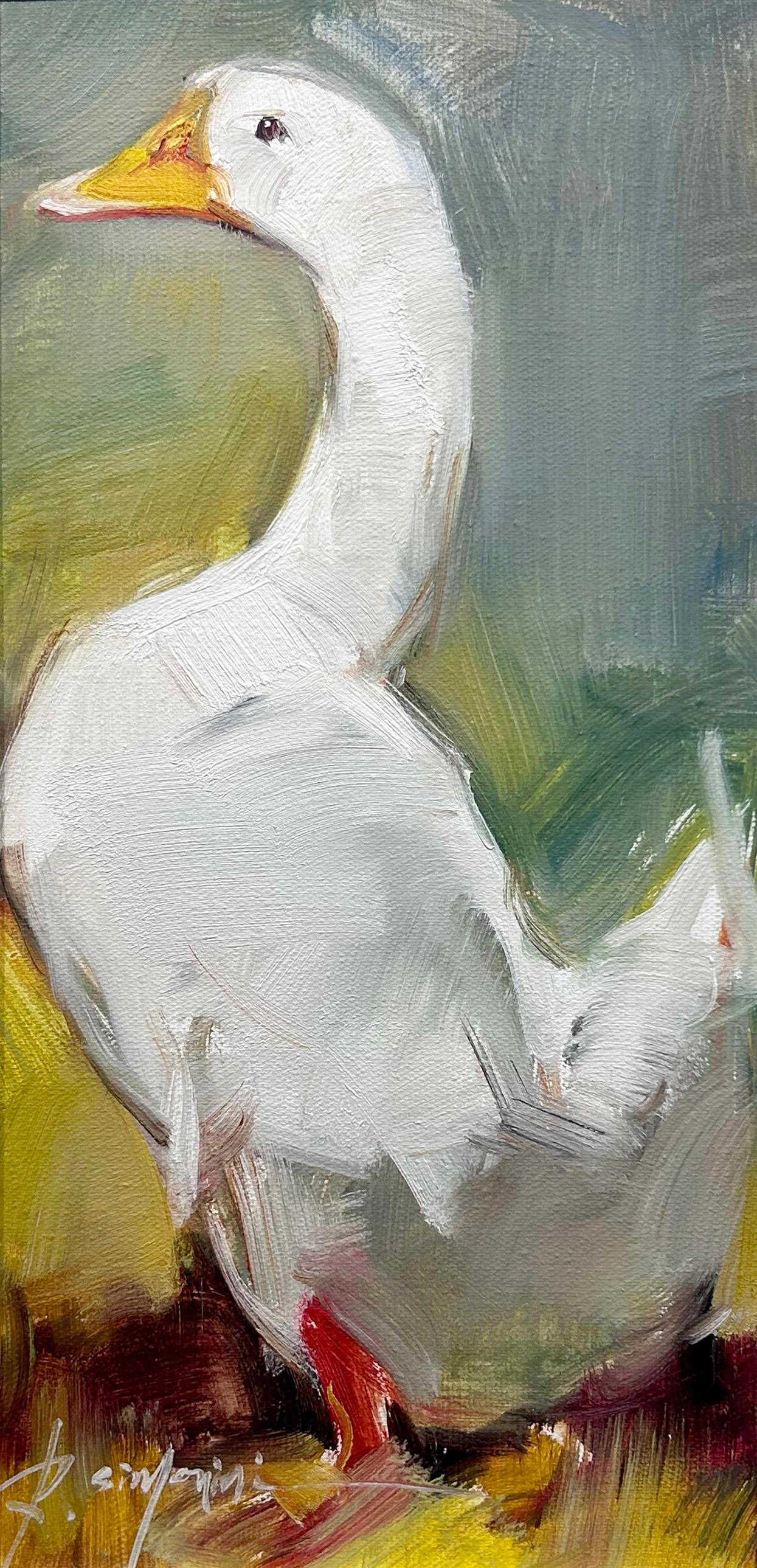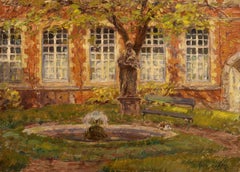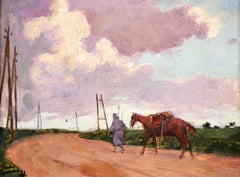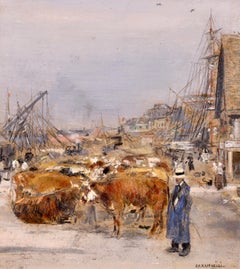
Portrait d'une femme elegante - Impressionist Portrait Oil by Norbert Goeneutte
View Similar Items
Want more images or videos?
Request additional images or videos from the seller
1 of 13
Norbert GoeneuttePortrait d'une femme elegante - Impressionist Portrait Oil by Norbert Goeneutte1886
1886
About the Item
- Creator:Norbert Goeneutte (1854 - 1894)
- Creation Year:1886
- Dimensions:Height: 27 in (68.58 cm)Width: 20 in (50.8 cm)
- Medium:
- Movement & Style:
- Period:
- Condition:Very good condition for age.
- Gallery Location:Marlow, GB
- Reference Number:Seller: LFA02041stDibs: LU415313830322
About the Seller
5.0
Platinum Seller
These expertly vetted sellers are 1stDibs' most experienced sellers and are rated highest by our customers.
Established in 2001
1stDibs seller since 2016
671 sales on 1stDibs
Typical response time: 3 hours
More From This SellerView All
- The Artist's Garden - Impressionist Oil, Cat in Garden Landscape by Henri DuhemBy Henri DuhemLocated in Marlow, BuckinghamshireSigned and dated impressionist oil on panel by French painter Henri Duhem. The work depicts a the artist's garden. A statue stands beside a water fountain while a cat rests in the sh...Category
Early 1900s Impressionist Landscape Paintings
MaterialsPanel, Oil
- The Great War - Impressionist Oil, Figure & Horse in Landscape by Andre DevambezBy André DevambezLocated in Marlow, BuckinghamshireWonderful oil on panel circa 1920 by French impressionist painter Andre Devambez. The work depicts a soldier leading his horse along a dirt track during...Category
1910s Impressionist Animal Paintings
MaterialsPanel, Oil
- L'embarquement de boeufs - Impressionist Oil, Cattle by Jean Francois RaffaelliBy Jean-Francois RaffaelliLocated in Marlow, BuckinghamshireWonderful signed oil on panel cattle and figures in landscape by French impressionist painter Jean-Francois Raffaelli. The work depicts oxen being loaded onto ships in Honfleur, France en route to England. Signature: Signed lower right Dimensions: Framed: 18"x16" Unframed: 9"x8" Provenance: Exhibition Jean Francois Raffaélli held at Galerie Simonson, 19 Rue Caumartin Paris - October 1929 (number 44) Jean-François Raffaëlli's father was a failed Italian businessman and Raffaëlli himself was, among other things, a church chorister, actor and theatre singer. He then studied under Gérôme at the École des Beaux-Arts in Paris. He travelled to Italy, Spain and Algeria and on his return to France settled in Asnières. In 1876, on a trip to Brittany, he first saw the potential of realist subject matter, if treated seriously. He became involved in meetings of artists at the Café Guerbois, where the Impressionist painters used to gather. As a result, Degas, contrary to the advice of the group, introduced Raffaëlli to the Impressionist exhibitions - according to one uncertain source as early as the very first exhibition, at the home of Nadar, and certainly to those of 1880 and 1881. In 1904, Raffaëlli founded the Society for Original Colour Engraving. He first exhibited at the Salon de Paris in 1870 and continued to exhibit there until he joined the Salon des Artistes Français in 1881, where he earned a commendation in 1885, was made Chevalier of the Légion d'Honneur in 1889 and in the same year was awarded a gold medal at the Exposition Universelle. In 1906 he was made Officier of the Légion d'Honneur. He was also a member of the Société Nationale des Beaux-Arts. In 1884, a private exhibition of his work cemented his reputation. He contributed to several newspapers such as The Black Cat (Le Chat Noir) in 1885 and The French Mail (Le Courrier Français) in 1886 and 1887. He published a collection entitled Parisian Characters, which captured his favourite themes of the street, the neighbourhood and local people going about their lives. In 1880 he participated, with Forain, on the illustration of Joris Karl Huysmans' Parisian Sketches (Croquis Parisiens). He also illustrated Huysman's Works. As well as working as an illustrator, he also made etchings and coloured dry-points. His early attempts at painting were genre scenes, but once he was settled in Asnières he started to paint picturesque views of Parisian suburbs. From 1879 onwards, his subject matter drew on the lives of local people. These popular themes, which he treated with humanity and a social conscience, brought him to the attention of the social realist writers of the time such as Émile Zola. In addition to his realist style, Raffaëlli's dark palette, which ran contrary to the Impressionist aesthethic, helped to explain the opposition of those painters to his participation in their exhibitions. More concerned with drawing than colour, he used black and white for most of his paintings. Towards the end of his life, he lightened his palette, but without adopting any other principles of the Impressionist technique. After painting several portraits, including Edmond de Goncourt and Georges Clémenceau, he returned to genre painting, particularly scenes of bourgeois life. Later in his career, he painted mainly Breton-inspired sailors and views of Venice. His views of the Paris slums and the fortifications, sites which have almost completely disappeared, went some way towards establishing a genre in themselves and perpetuated the memory of the area: The Slums, Rag-and-Bone Man, Vagabond, Sandpit, In St-Denis, Area of Fortifications. His realistic and witty portrayal of typical Parisian townscapes accounts for his enduring appeal. Born in Paris, he was of Tuscan descent through his paternal grandparents. He showed an interest in music and theatre before becoming a painter in 1870. One of his landscape paintings was accepted for exhibition at the Salon in that same year. In October 1871 he began three months of study under Jean-Léon Gérôme at the École des Beaux-Arts in Paris; he had no other formal training. Raffaëlli produced primarily costume pictures until 1876, when he began to depict the people of his time—particularly peasants, workers, and ragpickers seen in the suburbs of Paris—in a realistic style. His new work was championed by influential critics such as J.-K. Huysmans, as well as by Edgar Degas. The ragpicker became for Raffaëlli a symbol of the alienation of the individual in modern society. Art historian Barbara S. Fields has written of Raffaëlli's interest in the positivist philosophy of Hippolyte-Adolphe Taine, which led him to articulate a theory of realism that he christened caractérisme. He hoped to set himself apart from those unthinking, so-called realist artists whose art provided the viewer with only a literal depiction of nature. His careful observation of man in his milieu paralleled the anti-aesthetic, anti-romantic approach of the literary Naturalists, such as Zola and Huysmans. Degas invited Raffaëlli to participate in the Impressionist exhibitions of 1880 and 1881, an action that bitterly divided the group; not only was Raffaëlli not an Impressionist, but he threatened to dominate the 1880 exhibition with his outsized display of 37 works. Monet, resentful of Degas's insistence on expanding the Impressionist exhibitions by including several realists, chose not to exhibit, complaining, "The little chapel has become a commonplace school which opens its doors to the first dauber to come along."An example of Raffaëlli's work from this period is Les buveurs d'absinthe (1881, in the California Palace of Legion of Honor Art Museum in San Francisco). Originally titled Les déclassés, the painting was widely praised at the 1881 exhibit. After winning the Légion d'honneur in 1889, Raffaëlli shifted his attention from the suburbs of Paris to city itself, and the street scenes that resulted were well received by the public and the critics. He made a number of sculptures, but these are known today only through photographs.[2] His work was also part of the painting event in the art competition at the 1912 Summer Olympics. In the later years of his life, he concentrated on color printmaking. Raffaëlli died in Paris on February 11, 1924 Museum and Gallery Holdings: Béziers: Peasants Going to Town Bordeaux: Bohemians at a Café Boston: Notre-Dame; Return from the Market Brussels: Chevet of Notre-Dame; pastel Bucharest (Muz. National de Arta al României): Market at Antibes; Pied-à-terre Copenhagen: Fishermen on the Beach Douai: Return from the Market; Blacksmiths Liège: Absinthe Drinker...Category
1880s Impressionist Animal Paintings
MaterialsOil, Panel
- Pierrot Surpris! - Impressionist Oil, Portrait by Armand Francois HenrionBy Armand (François Joseph) HenrionLocated in Marlow, BuckinghamshireSigned impressionist oil on panel circa 1910 by French painter Armand Francois Henrion. This charming work depicts a portrait of a surprised Pierrot - a French clown - with a white powdered face wearing white ruffles and a pink hat. The pierrot is set against a brown background. Signature: Signed lower right Dimensions: Unframed: 7"x5.5" This painting is not currently framed but a suitable frame can be sourced if required Provenance: Private French collection Armand François Joseph Henrion...Category
1910s Impressionist Portrait Paintings
MaterialsOil, Panel
- Dancer at the Opera - Impressionist Portrait Oil Painting by Norbert GoeneutteBy Norbert GoeneutteLocated in Marlow, BuckinghamshireSigned, titled and dated figurative oil on panel by French impressionist painter Norbert Goeneutte. The work depicts an elegant seated dancer getting dressed. She is wearing a dress with a black corset trimmed with yellow flowers around the bust and a white tuile skirt. A yellow flower contrasts against her dark hair. Signature: Signed upper right and titled and dated 1886 verso Dimensions: Framed: 9"x7" Unframed: 8"x6" Provenance: Private French collection Goeneutte studied under Pils and exhibited at the Salon from 1876 onwards. He was one of the organisers of the painter/engraver exhibitions ( Expositions des Peintres-Graveurs). His principal preoccupation lay in capturing scenes from everyday life in Paris, portraying its citizens and, above all, the women of the city. There is a discernible influence of Raffaëlli, although Goeneutte lacks the latter's expressive intensity. Examples of his work include Classroom, Boulevard de Clichy in the Snow, Arrival of the Wedding Party...Category
1880s Impressionist Portrait Paintings
MaterialsPanel, Oil
- Pierrot aux bonnet noir - French Impressionist Oil, Portrait by Armand HenrionBy Armand (François Joseph) HenrionLocated in Marlow, BuckinghamshireA charming oil on panel circa 1900 by French impressionist painter Armand Francois Henrion depicting a portrait of a happy Pierrot - a French clown - wearing white ruffles and a black hat. The portrait is contrasted by an orange-red background. Signature: Signed lower right Dimensions: Framed: 9.5"x8" Unframed: 7"x5.5" Provenance: Private French collection Armand François Joseph Henrion...Category
Early 1900s Impressionist Portrait Paintings
MaterialsOil, Panel
You May Also Like
- "Violin Player, " Oil PaintingBy Louis RecchiaLocated in Denver, COLouis Recchia's (US based) "Violin Player" is an original, handmade oil painting on canvas. About the Artist: Louis Recchia has been producing contempo...Category
2010s Impressionist Portrait Paintings
MaterialsCanvas, Oil
- "The Cautious Guardian, " Oil PaintingBy Louis RecchiaLocated in Denver, COLouis Recchia's (US based) "The Cautious Guardian" is an original, handmade oil painting on canvas. About the Artist: Louis Recchia has been producing contemporary art in Denver fo...Category
2010s Impressionist Portrait Paintings
MaterialsCanvas, Oil
- Vintage American Impressionist Scottie Dog Terrier Animal Portrait Oil PaintingLocated in Buffalo, NYVintage original oil painting of a Scottie Dog. Oil on board. Unsigned. Framed. Image size, 16L x 16H.Category
Early 2000s Impressionist Animal Paintings
MaterialsCanvas, Oil
$1,996 Sale Price20% Off - Ray Simonini, "Penny" 16x8 Impressionist Pig Farm Animal Oil Painting on CanvasBy Ray SimoniniLocated in Saratoga Springs, NYThis painting by artist Ray Simonini titled "Penny" is a 16x8 farm animal oil painting on canvas featuring a portrait of a pink pig against a ...Category
2010s Impressionist Animal Paintings
MaterialsOil, Canvas
- Ray Simonini, "Savannah" 36x24 Farm Animal Brown Cow Portrait Oil PaintingBy Ray SimoniniLocated in Saratoga Springs, NYThis painting by artist Ray Simonini titled "Savannah" is a 36x24 farm animal oil painting on canvas featuring a portrait of a brown and white...Category
2010s Impressionist Animal Paintings
MaterialsCanvas, Oil
- Ray Simonini, "Cinnamon" 10x8 Impressionist Brown Cow Farm Animal Oil PaintingBy Ray SimoniniLocated in Saratoga Springs, NYThis painting by artist Ray Simonini titled "Cinnamon" is a 10x8 farm animal oil painting on canvas featuring a portrait of a cinnamon colored...Category
2010s Impressionist Animal Paintings
MaterialsCanvas, Oil
